What is the best way to get rid of midges? There are three options, which should be used together for better results. The first one is applying repellent designed for personal protection. Permethrin-based products effectively repel midges but provide only limited protection. A more integrated approach should also include larva control and trapping. To kill larvae, place granules made with bacteria like Bti (Bacillus thuringiensis subspecies israelensis) in standing water. This where midges breed. The third method includes trapping with bug zappers that attract insects by UV light and kill them by electrocution. These traps can be indoor and outdoor, with the latter ones featuring dust proof and waterproof construction.
Midge is an umbrella term for hundreds of insect species. Their distinctive features are that they are small, numerous, annoying and sometimes have a quite painful bite. In this article, we will combine scientific research and experienced exterminators’ proven techniques. Today, we talk about biting and non-biting midges, how to get rid of them and the best repellents, traps and bug zappers, approved by the scientists for eliminating these annoying insects.
{code 416}
Midges, what are they? They are annoying little flying bugs that will drive you up the wall and leave very painful bites. They attack and surround a person and it is almost impossible to get rid of them.
North America is home to over 800 species of midges. We will not torment you with the entomological details of their appearance or breeding patterns. An ordinary person would hardly be able to distinguish one species from another when it comes to the midges’ appearance. Therefore, for the sake of simplicity, we will classify them all according to their habitat, so that it is instantly clear what you’re dealing with: no-see-ums live mainly in wetlands, sand flies inhabit sandy shores, black flies (buffalo gnats) reproduce only over oxygen-enriched water and non-biting midges, breed in the still water.
Let us now perform a comprehensive analysis of the main midge treatment techniques. They tend to vary and sometimes can even have an opposite effect as while DEET-containing repellents effectively deter no-see-ums, some scientists warn that it is attractive for black flies. So be careful and read very attentively!
Top Best Midge Repellents
Midges are attracted by open body parts, so you must make sure you wear long sleeves when you go out early in the morning or late at night in summer. If there are too many midges, use repellent spray to protect yourself and your family, especially if you’re going camping or you live in a marshy area. The University of Florida entomologists recommend using DEET-based repellents to repel biting midges. You can use such proven DEET-based repellents as Repel.
Repel HG-94108 100 Insect Repellent
A Repel repellent is one of the most popular and effective repelling sprays against mosquitoes, no-see-ums, and biting flies . Its DEET concentration is 98%! It is supposed to protect you not only from mosquito and tick bites but also from midges’ bites. Positive customer feedback is a sign that the spray works. However, consumers agree that a single use effect is not sufficient. My problem is biting midges. When it comes to midges, Repel 100 lasts about 1 1/2 hours. Black flies like your ears, neck, lips, nose, eyes, and elbows. Why? Ask the midges. But putting Repel 100 around these areas is effective. However, if midges have become a real disaster, 1.5 hours is also a success, isn’t it?
{code 972}
Repel: Check current price
Sawyer Products Premium Permethrin Clothing Insect Repellent
Although Sawyer Products Premium Permethrin Clothing Insect Repellent is more expensive than other repellents, it provides protection for up to 6 weeks. This versatile repellent promises to deal with ticks, chiggers, mites, mosquitoes and 55 other insect species, making it an ideal option both for a camping weekend, and for longer outings. Moreover, it not only repels insects, but also kills them.
Its active ingredient, permethrin is registered for use by the U.S EPA, but just in case, keep the spray away from cats as it can adversely affect their nervous system. The spray has been helpful in protection of people from midges for many years: Sawyer Permethrin Clothing Insect Repellent has been exclusively used for treating uniforms for the US and Canadian militaries for almost 30 years. Ordinary users also note that this insect repellent is ready to confront “TONS of gnats and mosquitoes” even in field conditions. They also recommend that special attention should be given to using it on hats, if you do not want to suffer from having your face bitten.
The repellent is applied right on your clothes and continues its action even after the wash (can be washed 6 times). Unlike DEET, which can damage certain fabrics and materials, permethrin can be used even for such fabrics as silk, as well as synthetic and waterproof fabrics (it does not affect plastic or decorative elements). That is why it can be sprayed not only on clothes, but also on the external side of the tent, backpacks, hammocks, outdoor furniture and mosquito nets. Keep going for about 30 seconds on each side. Asthmatics need to use the product with caution indoors.
{code 973}
Sawyer Products: Check current price
As we’ve already mentioned, for deterring black flies instead of DEET you need geraniol-containing sprays, such as the following one.
BUGGINS Natural Insect Repellent 0% DEET

As for the obvious advantages of this repellent, it has a nice smell, non-sticky consistency (you will not need to wash it off the skin) and is quite effective. Its effect has already been tested during night fishing, hiking, walks in the park, but most of all, those who work outdoors or live near rivers are grateful to this product (you do remember that black flies are easiest to find next to flowing water bodies, don’t you?).
Obviously, due to being completely natural the spray is well behind its synthetic rivals in terms of action times, as you will have to re-apply it once every two hours. But it seems that it’s worth it as in today’s market there are few repellents that really work against black flies, but this repellent can be used safely for the whole family.
{code 974}
Buggins: Check current price
If you want to learn more about the repellents, follow our review of the 18 best mosquito repellents.
Midge Traps and Bug Zappers are the Best Way to Get Rid of Midges in the House and in the Yard
Here we’ve picked for you the three best selling bug zappers and traps approved by the experts and tested by thousands of customers.
Bug zappers can help reduce the number of adult midge population.
It won’t hurt to try, though. The main idea is to find a better proven and more reliable electric bug zapper which won’t break down because of the many bugs to be killed and which is compatible with other control products.
There are two best selling bug zappers. The first is outdoor Flowtron BK-15D Electronic Insect Killer, and the second is indoor Aspectek Powerful 20W Electronic Insect Killer.
Flowtron BK-15D Electronic Insect Killer, 1/2 Acre Coverage
Flowtron BK-15D is made as an ancient lantern with a 15 watt UV lamp wired with an electric grid. This device is capable of killing a variety of flying insects, including biting and non-biting midges, sand flies and other gnats within half an acre. It has been empirically verified that during the night, one such “killer lamp” can attract and electrocute up to 10 000 different insects!
Using Flowtron is a piece of cake: at dusk, when it begins to get dark, hang the zapper near your house, turn it on and leave it to work until the morning. Judging by reviews, in the morning you will find quite a big harvest.
Be careful of safety rules as well. Use Flowtron outdoors only, and stay at least 25 feet away when it is on. But don’t worry about your birds or pets: the device has a protective case that will not allow animals to touch the internal electric grid.
{code 975}
Flowtron: Check current price
Aspectek Powerful 20W Electronic Indoor Insect Killer | Best Indoor bug zapper
The principle of operation of this bug zapper is the same as that of the outdoor one: the insects become attracted to the UV lamp light, and instantly get electrocuted by the grid. Plug the Aspectek Powerful 20W Electronic Indoor Insect Killer in the socket and it will destroy midges, sand flies, gnats, flies and other insects, which were unfortunate enough to have flown into your room. All you have to do is simply clean the tray of the dead insects regularly.
Where can such a device be used? Use it in any environment: at home, in the garage, at work, in a hospital, cafe, and even in large industrial buildings as the manufacturer promises that Aspectek is able to cover an area up to 6 000 sq ft. It can work safely even in your kitchen as there is a tray for the insects to crumble. Of course, it is best to turn it on at night, but during the day it is also able to benefit you by killing annoying mosquitoes. Also, do not be afraid to leave it on at night as the zapper is equipped with a protective grate to keep your pets away from the electrical grid.
{code 976}
Aspectek: Check current price
DynaTrap DT150 Ultralight Insect Trap, 300 Square Feet | Best CO2 insect trap
The Dynatrap Ultralight Insect and Mosquito Trap is the most renowned CO2 insect trap to cover up to 300 sq. ft. It traps midges, sand flies, gnats, flies, mosquitoes, and other flying insects, including flies, wasps and beetles. Just like the bug zappers, it lures the insects with the warm light of a UV lamp, and it also has an additional feature: it mimics human breath! This is the result of UV light and special titanium dioxide-coated surface of the device interaction.
What happens next? After being lured with the light and breath, an insect encounters a powerful but quiet fan which sucks it inside the grid like a vacuum cleaner: once and for all. Once inside a special compartment, all midges will die from dehydration. By the way, do not worry that the insects will get out: the said compartment is tightly closed, even when the trap is turned off. The Dynatrap Trap is not only convenient to install in the patio, pantry, garage or gazebo, but, because of its compact size, it also can be taken with you on trips as long as you have access to electric power!
{code 978}
DynaTrap: Check current price
GLOUE Bug Zapper Light Bulb, 2 in 1 Mosquito Killer Lamp UV Led Electronic Insect & Fly Killer
Here is another type of indoor zappers – bug zapper light bulb. It attracts insects by UV light and kills them by electric current. Using it, you will significantly save on lamps and nightlights: with no insects around, the device operates in a “light only” mode as a great and cost-efficient light source. Unlike conventional lamps, this bulb is energy-saving, with 25,000 burning hours (approximately 3 years).
You may use it 24/7 in the rooms, offices, shops, garages, patios, on a porch and even on a trip. It can be screwed into a lampshade as a conventional bulb. GLOUE is convenient to use in the children’s room with a night light only and protective plugs mounted on the other sockets.
GLOUE has three modes of operation: bug zapper, light only, bug zapper & light which can be interchangeably switched to each other very easily. The bulb covers up to 540 sq ft but in order to obtain the better effect, place one device per room.
This bulb doesn’t use chemical baits, nor does it release toxins over the course of its operation. It is safe for children and pets, therefore, you can safely place it in the children’s room. But the first thing you should remember is that it is an electric appliance, so don’t allow your children play with it. It zaps silently and not only midges and mosquitoes but other insects as well.
{code 977}
GLOUE: Check current price
How to Kill Biting & Non-Biting Midges
The key thing about fighting these pests is patience. Below you’ll find accessible control products for both biting and non-biting midges to help you begin an effective treatment promptly.
Speaking of biting midges, the Purdue University scientists ascertain that, “Because of the varied semi-aquatic to aquatic habitats they will breed in control is not feasible”. This feature distinguishes them from mosquitoes breeding exclusively in standing water.
Biting midges can breed in a WHOLE BUNCH of spots including standing and running water, pond banks, landfills, swamps, mud, and they can be found even in the mountains! Is there anything to be done with rivers or swamps? And as for the non-biting midges, they are found in copious amounts (over 4,000 larvae / sq ft.) in water rich in food, as well as large and small rivers, ponds, lakes and stagnant waters. In order to treat such volumes of water, measures need to be taken at the federal level.
Still, things are not that bad, as certain limited impact measures bear fruit. Once you have done everything possible to destroy the midge breeding environment, you need to destroy both the larvae and adults. The treatment methods are virtually the same as the ones used to control mosquitoes.
What to Do with Plenty of Irritating Non-Biting midges?
Midges like humidity and warm climate. If your house is located near water, then surely you are familiar with these creatures all too well. Standing water attracts midges as they are able to lay thousands of eggs from which adults grow up, which in turn begin to breed actively. Do you now understand why you have such a horde of midges outside? That is why the first step is getting rid of the larvae.
If the midges breed in still waters like a small pond, then to prevent midges from growing, you need to get rid of their larvae. Use bioinsecticides based on live B.T.I. bacteria as larvicides.
{code 979}
Summit 20-Pack Mosquito Dunk and granuled B.T.I. Mosquito Bits are considered to be the most effective B.T.I-based products. Both of them top the list of best sellers in the Insect & Pest Repellent category on and have been tested by thousands of users.
{code 980}
Read more about B.T.I, foggers and other ways of midge control in our complete guide to how to get rid of mosquitoes.
Best Midge Repellents, Bug Zappers and Traps Comparison Chart
Distinguishing and Getting Rid of the Biting Midges as Per the Scientists’ Recommendations
All kinds of biting midges are quite small, but despite this, their bite is very painful. Swelling and blisters will appear on the spot of the bite that will last long enough. Such a painful effect is because the microscopic midges do not sting like mosquitoes, instead they pull out small pieces of skin with their small jaws, hence the pain and the blisters after the bite. Then there are some differences.

No-see-ums lay their larvae in a warm and humid environment. They multiply at a frenetic pace, and there may be thousands of larvae in water bodies. Their favorite spots for cultivating their offspring are in and around a salt-marsh and mangrove swamps, on shores of streams and ponds, and in muddy substrates.
Sand flies, as it is obvious from their name, breed in wet soils in the tidal zones such as mangrove mud and sandy shores.
Black flies (buffalo gnats) unlike the previous biting midges, develop in oxygenated water sources, therefore adults are usually associated with slow moving streams, creeks, or rivers where the immature stages develop. Flowing water does not necessarily imply white water rapids, but the water must be moving. Water in lakes and ponds that is not flowing is unsuitable for black fly development.
How to Get Rid of No-See-Ums and Sand Flies?
In case of adult biting midges, applications of insecticides targeting the adult stage are not efficient. While this type of application may kill biting midges active on a given night, they are continually scattering from the larval habitat. The scientists don’t recommend using larvicides because the immense area to be covered is nearly impossible to get rid of the larvae.
DEET-containing repellents and traps will be the best solution to eliminating no-see-ums and sand flies. On a large scale, removal trapping is conducted using CO2 as an attractant to lure the biting midges to an insecticide-treated target where they are killed. Research from the University of Florida, Institute of Food and Agricultural Sciences Florida Medical Entomology Laboratory showed that biting midge populations were reduced in the test areas of Vero Beach and Boynton Beach, FL, and Castaway Cay, Bahamas.
The scientists recommend that tourists should refrain from visiting places where these insects are said to be. For those who have already settled in places where there are a lot of mosquitoes (e.g. coastal areas), as a free but effective method, the scientists advise to frequently ventilate the room with fans: Because no-see-ums are so small and are weak fliers, ceiling and window fans can be used at high speeds to keep no-see-ums out of small areas.
One piece of valuable advice is the following: Keep vegetation surrounding the house to a minimum. This reduces insect harboring areas and increases air flow surrounding the house. And, of course, set mosquito nets on windows, canopies over the bed, and when you go outside, make sure you wear Special No See Um Headnets, such as the one, by Coghlan’s.
{code 971}
How to Get Rid of Black Flies?

The key to success in getting rid of black flies is destroying the larvae and eliminating the favorable reproduction environment. Satisfactory control has been attained in some states by treating streams with the natural product, Bacillus thuringiensis var. israeliensis (Bti), as claimed by the scientists from the University of Florida. As for repellents, they argue that repellents containing “DEET” formulations are not very effective for prevention of black fly bites. Individuals wearing DEET may actually have more black flies attracted to them than individuals not wearing DEET. Our tests indicate that some protection is given by herbal-based treatments with an active ingredient of geraniol. Permethrin, which deters not only black flies, but and sand flies, ticks and mosquitoes can be sprayed on clothes. Such products can be found below in our treatment review.
A traditional natural method also exists in dealing with the irritating bugs by using garlic. This might as well be interesting for those who live in a hostile environment with an abundance of flying insects. The point is that you include garlic into your diet and over time your skin will acquire a scent that is imperceptible to humans, but deterrent for small black flies, so you will become a real walking repellent. The main thing in this case is to pay special attention to hygiene so that the smell does not become noticeable to others.
Entomologists’ Opinion About How Dangerous Midges Bites Are for Humans?
It is extremely frustrating when gnats fly into your eyes or bite you, isn’t it? But apart from the discomfort and unpleasant symptoms which include itching, burning and swelling, any midge bite can cause an allergy. Among the common allergy symptoms you’ll find severe rash, fever, shortness of breath, diarrhea, etc. Besides, the Purdue University entomologists confirm the existence of an allergy to the black fly (buffalo gnat) bite: “Reactions to black fly bites that collectively are known as” black fly fever “include headache, nausea, fever, and swollen lymph nodes in the neck”. Any strange symptoms after the midge bite require urgent antihistamine treatment (if you have been diagnosed with an allergy) or an immediate visit to a doctor.
The worst-case scenario is being contaminated with some disease. The list of possible viral infections depends on where and who bit you. It’s very easy to catch something in Central or South America and Africa, so make sure you prepare well before travelling to tropical regions. In the U.S, there is no midge bite disease epidemic, but you still have to be on the lookout.
In case of non-biting midges, everything is much wiser, as the NC State University specialists assure that «Most species of chironomid midges are highly desirable organisms in aquatic habitats. Midges are an important food source for fish and predatory aquatic insects.».
What Should You Do If You Failed to Avoid a Bite?
- Rinse the wound. Rinse the swelling thoroughly with soap or use an alcohol wipe to reduce the risk of spreading the irritation.
- Minimize itching at the bite spot. Dissolving soda in water and applying the substance onto the bite is the best method for that. As an alternative, you can use such medicines as StingEze Dauber or Benadryl Itch Relief Spray which will be handy multiple times when camping.
- Take antihistamines. Consult a doctor to avoid contraindications and gain an effective result in case of antihistamines.
How to Avoid Having Non-Biting Midges at Home?
Here are a few tips to help you encounter the non-biting midges less often:
- Use mosquito nets so that the midges can’t get inside your house
- Don’t turn bright lights on the porch at dusk or change white light bulbs to more yellowish.
- Close blinds or curtains when you turn the lights on in the room. Otherwise you will attract a swarm of midges.
- Make sure the midges have no entrance inside the house: check for gaps in the windows, doors, and whether the ventilation system is in order or if there are any other holes.
- Non- biting midges like moisture, so dry all open water containers, especially in winter. Even stagnant liquid in the old tin barrel can be a real insect incubator.
- If a certain water reservoir cannot be dried (such as ponds or small water bodies), fill them with B.T.I. The experts believe that this must be one of the most effective treatments.
- During an open midge season, plan your walks and parties more thoroughly as the midges’ activity peaks early in the morning and late at night.
- Use insect traps.
Summary!
We’ve covered the main methods for getting rid of different kinds of annoying bugs. The most effective, as always, are combinations of treatments as traps are less effective alone and repellents hardly bring the desired effect. Only a combination of tips and techniques will help you achieve the needed results and get rid of midges for good!
{code 416}
{code 64}

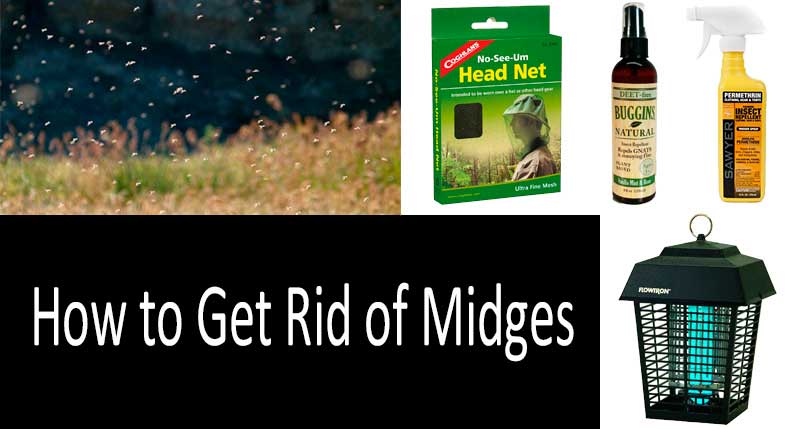

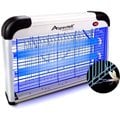
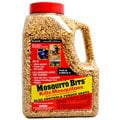
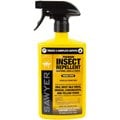








 Product type: DEET-based insect repellent
Product type: DEET-based insect repellent  Product type: permethrin-based insect repellent
Product type: permethrin-based insect repellent  Product type: natural insect repellent
Product type: natural insect repellent 
 Product type: indoor bug zapper
Product type: indoor bug zapper  Product type: CO2 trap
Product type: CO2 trap  Product type: indoor bug zapper
Product type: indoor bug zapper  Product type: Biological larvicide (B.T.I)
Product type: Biological larvicide (B.T.I)  Product type: Biological larvicide (granuled B.T.I)
Product type: Biological larvicide (granuled B.T.I)  Product type: head net
Product type: head net 

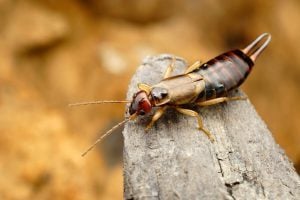

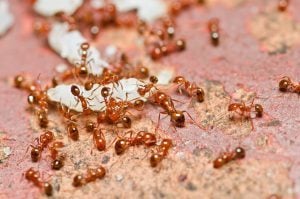

18 thoughts on “How to Get Rid of Midges: TOP-10 Best Repellents and Killers for Midges”
My family and I live near a lake, so unfortunately we always have lots of insects at home, including midges. This article says that larvicides are useless as there are too many potential places for breeding. How to get rid of midge in house with kids? They are bitten all over, and mosquito nets don’t seem to be too helpful ☹
Mosquito nets are, of course, good, but the midgets are smaller than the net cells and can easily fly inside. You can turn the fan more often but this is a bad idea as your kids can catch a cold. If you want to know how to get rid of biting midges safely, follow the scientists’ advice. They say that traps and zappers are most effective. Pick ones for indoor use as they don’t have any synthetic bait and are safer for children. I use CO2 traps to get rid of midges in the house. I bought two universal ones for outdoor and indoor use. It’s important to check then regularly.
And I use a bug zapper for getting rid of midge in house. I also have kids and I’m afraid other device can hurt them. Zapper, on the other hand, can be hung high enough for them not to reach. Of course, in the beginning it is a bit noisy, especially when the burned midges crackle on the electric grid, but you get used to this after a while. We ignore the noise at night completely. It also does not consume much electricity, so our family bill hasn’t really increased.
Help! How to get rid of blackflies if my house is very damn? I live in Florida, if you know what I mean.
My condolences. Black flies are terrible, I have had them. My wife is allergic to their bites so I also wondered how to get rid of blackflies and even tried to use some foggers in the backyard to reduce the number of bloodsuckers flying in the house. It was all in vain. Finally we moved away from water and that solved the problem. If that is too radical for you, try a home zapper. It should cope with the task even if it is damp.
What is the best midge repellent? Everyone recommends DEET, but my skin is too sensitive so I’d like to find a gentler product.
Of course, DEET, I am a big fan of this midge repellent. I doubt anything better has been invented. It also seems most reliable as everyone has been using it for ages. It can’t repel all types of midges though as it is useless against black flies. So just buy a low-concentrated DEET repellent, I don’t think it will hurt your skin.
What about permethrin? Have you forgotten about it? I personally don’t like the greasy sensation repellents leave on my skin, so I prefer clothes repellents. When I go camping, I dissolve concentrated permethrin in water in advance and spray my clothes, tent and backpack with it. For me it is the best midges repellent.
Houston, we have a problem! How to get rid of midge in the house if these darned bloodsuckers keep swarming in front of our windows? There aren’t any fewer of them! They keep on flying into the house even though I have sealed all holes and gaps as thoroughly as I could. Maybe they enter through the ventilation system? What should I do?
Nothing will change at home as long as you have a midge apocalypse outside. I know for sure from my own experience. We even had to wear protective netted clothing just to go outside and walk to the nearest house. That was incredibly annoying. Then I asked my neighbor for tips on to get rid of midge and biting midges best. He showed me his outdoor Flowtron Zapper and explained that only this device (and repellents) proved to be more or less useful over thirty years of experience in eliminating insects. After that conversation I bought I similar (but cheaper) gadget and there became fewer midges both at home and in the yard.
I have several bug zapper bulb from PestVenator, and I forgot what is bugs. Zapper catches mosquitoes, gnats, flies, clothes moths and other flying insects. I put one bulb in the yard, and two more in my house. A great solution for a warm season.
I have biting black bugs in my car. Please help! I see almost translucent bugs fly out of my car when I open the door
The bugs crawl up my legs while I drive. I have my car detailed and carpet steamed. Still have bugs
Brickbybrick, have you found a solution? I think a pyrethrin spray would work best as it is a repellent and insecticide in one. It is also used for clothing so should be safe on fabric car seats etc…
We have a canyon with a seasonal creek and many huge sycamore trees on our property. It is infested with small flies that love to bite us especially our elbows. They Don’t appear to be mosquitos but very small gnat like flies that live in the leaves on the ground. We thought they were midges but the bites are not painful just itchy. Are biting midge bites always painful?
Guaranteed midge killer. Leave a glass of sweet cider anywhere and they will be in it dead before long, I do it everytime i get them.
I will for sure try the cider because I have a horrible but important story to share. My husband and I like to camp and when we’re alone we sleep in the nude. He woke up one morning with bites on his you know what!!! OMG!!! So the next night he put some repellent on down there and the stinging pain was so bad he was doubled over in tears for three hours. Be sure to test the repellent on a small part of your body that isn’t very sensitive and wear clothes in the summer nights. We do now that we learned our lesson.
These insects are really irritating! I am glad I came across this article. Thank you for this!
I am in desperate need of help I have a family member who is infested and need help to see what can be done to kill em. Please contact me at 719-557-1200 ask for Connie and tell her your calling about midges please please in desperate need.